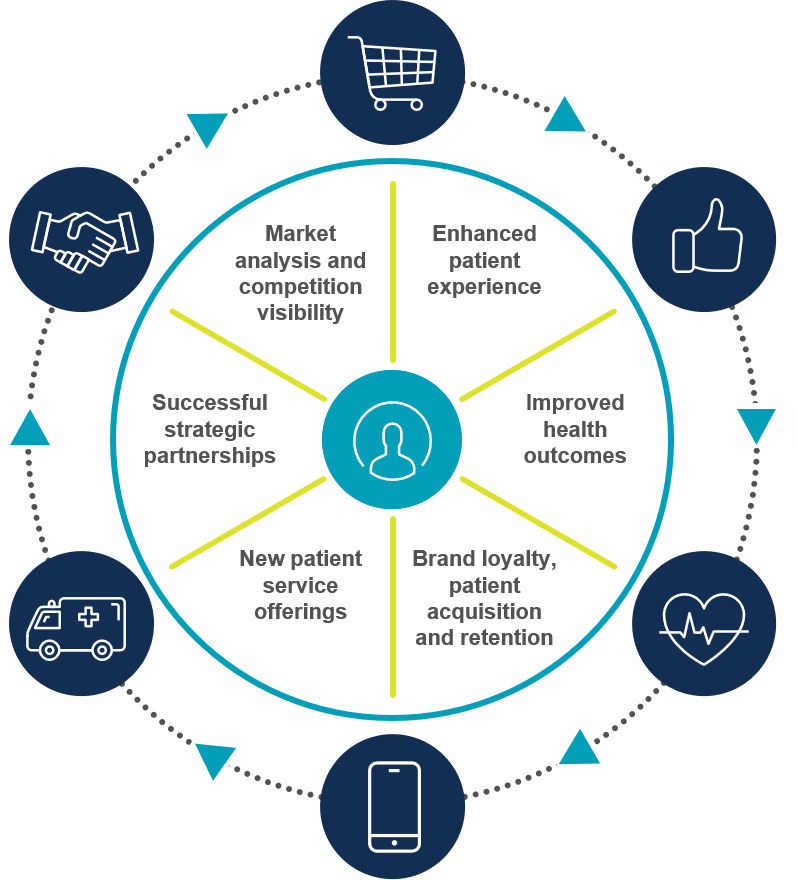The healthcare marketplace is entering a new age of consumerism. On January 1, 2021, the U.S. Centers for Medicare and Medicaid Services (CMS) set the Price Transparency Rule into motion. This regulation—paired with the Office of the National Coordinator of Health IT’s (ONC’s) Interoperability Rule deadlines—promotes more data-sharing and a free marketplace for patient interaction. Yet, for many time- and resource-strapped healthcare providers, unlocking the promise of new regulation may seem like an unattainable aspiration. In this blog, we'll explore several critical considerations for providers as they adapt to new regulatory mandates and transform towards a consumer-driven future.
First, some background on the industry changes underway. Last year, CMS issued final rules stating hospitals must publicly share standard prices of up to 300 shoppable services, or nonurgent procedures that patients can schedule well in advance of service. In effect, hospitals need to share their rates with insurance companies and have a consumer-friendly way to display these services online. Listed costs should include gross charges, minimum and maximum negotiated rates, and any other negotiated rates with health plans or payors. These changes foster greater visibility around the cost of care and anticipated reimbursements for healthcare services.
This is a decisive victory for patients seeking greater transparency and ease surrounding their healthcare. With the click of a mouse or touchscreen, patients will be able to check provider reviews, prices, testimonies, and quality healthcare outcomes. The result? A reimagined healthcare industry—one that’s accessible to the average patient and offers an e-commerce experience in the league of airfare, hotels, or even retail products. Ultimately, consumers will be able to flex their buying power in exchange for online experiences that hit the mark.
While the future for consumer-driven healthcare looks bright, this fundamental transformation begs an important question: Are providers ready? In the wake of COVID-19, many health systems quickly moved their eye towards treatment and vaccine distribution. With a focus on immediate pandemic response, they may be less equipped to respond to the new CMS rules.
 To thrive in the future industry landscape, below are six essential considerations for healthcare providers:
To thrive in the future industry landscape, below are six essential considerations for healthcare providers:
- Market analysis and competition visibility: Because the regulation applies to all healthcare providers, this is a prime time for industry players to gain a better understanding of their competitors. For instance, how do your reviews, prices, and quality outcomes stack up against the competition? Providers that wield market insights to evaluate opportunities and design solutions will best connect with consumers. This consideration will be particularly valuable for providers in urban areas that often face tough competition for market share. Yet, even rural health systems should take this into account. After all, a 30-to-45-minute drive is often worth a lower cost, higher-quality outcome.
- Enhanced patient experience: Providers that perceive the regulation purely as a check-the-box compliance exercise will miss the larger picture. Providers can now reimagine patient experiences, considering questions like: How do we as providers want to interact with our patients? How does our current workflow interact with patients? What gaps are we currently missing in our patient experience? Will we need to build, purchase, or partner with new vendors to fill these gaps? These types of conversations are now more relevant than ever and can spark fruitful strategic planning discussions. Increasingly, consumer-friendly, data-centric strategies and initiatives will take precedence.
- Improved health outcomes: With increased data-sharing and pricing transparency comes the likelihood for improved care outcomes. Healthcare data today is generally fragmented and not easily accessible to patients. By removing those barriers and empowering the consumer, we anticipate a rise in care coordination and improved healthcare delivery.
- Brand loyalty, patient acquisition and retention: Transparent pricing, accessible online, allows providers to engage and interact with patients in a new way. Moving beyond brick-and-mortar interaction, providers can win new patients’ trust when they engage and interact digitally. Building on patient experience conversations, providers should take the time to document how they want this process to work.
- New patient service offerings: Reimagined service offerings are an optimal way to fill any experience gaps. Services could include upfront patient estimates, financial aid conversations for out-of-pocket costs, self-service scheduling technologies for appointments, alternative payment methods, and even zero-percent financing opportunities for patients who can afford monthly payments. If done correctly, these new offerings can also help to solidify brand loyalty and patient retention. Providers that enhance their workflow, advance the patient experience, and build strategies to attract and retain patients will get ahead. And stay ahead.
- Successful strategic partnerships: We anticipate that the shifting regulatory landscape will bring new entrants and third-party vendors offering novel solutions. These solutions will be made possible by increased data-sharing. For health systems that are prepared to respond, the disruption can be fruitful. For instance, providers could partner with third-party disruptors, employers, or even payors. Organizations today should be thinking about prospective data-sharing partnerships and, more importantly, the benefit they create for patients.
While CMS noncompliance penalties are detrimental on their own, there is even more at stake for the industry. We believe the changing regulatory climate allows hospitals and health systems to reimagine their business models and operations for a new, consumer-driven landscape. As we enter this new age, healthcare providers that look deeper will discover breakthrough opportunities and ride the industry’s next wave of growth.
